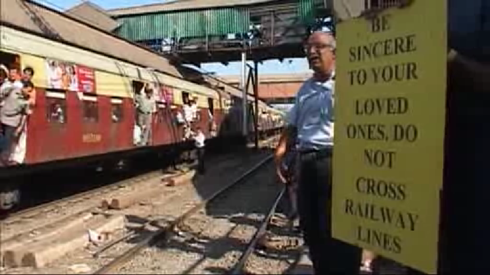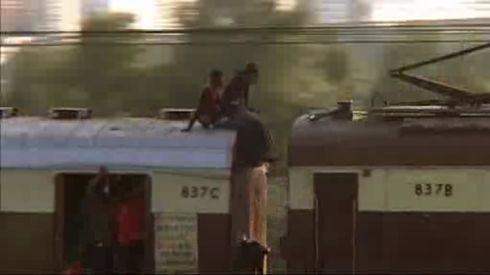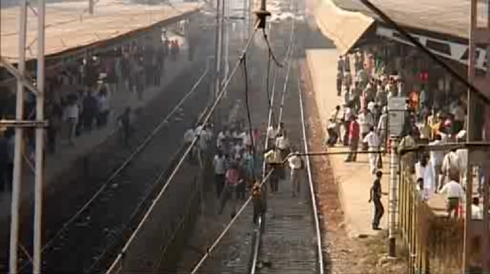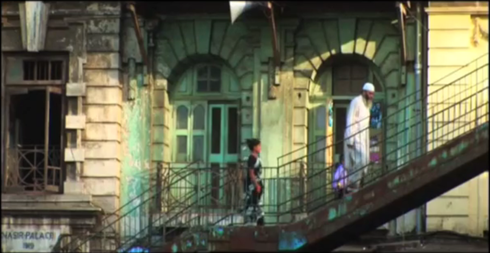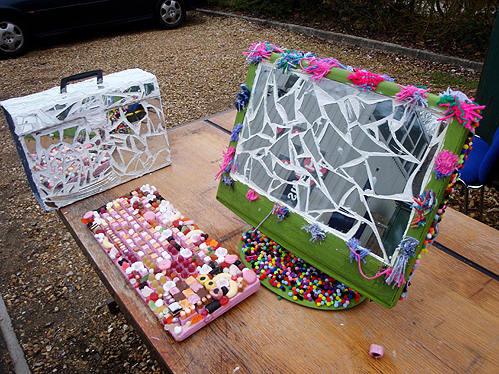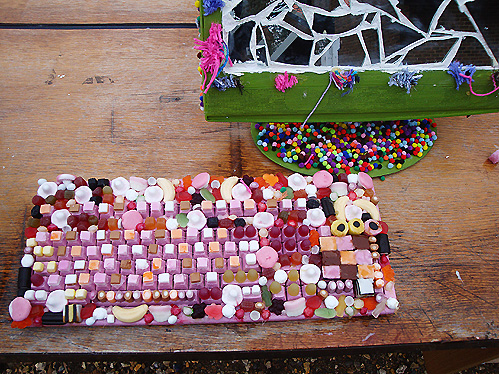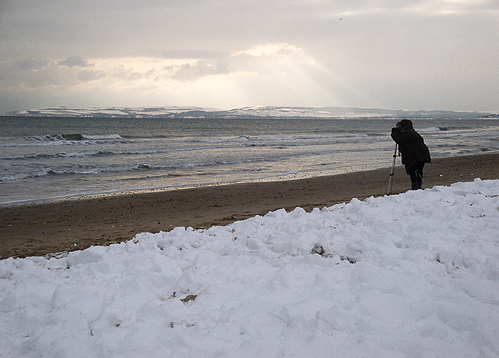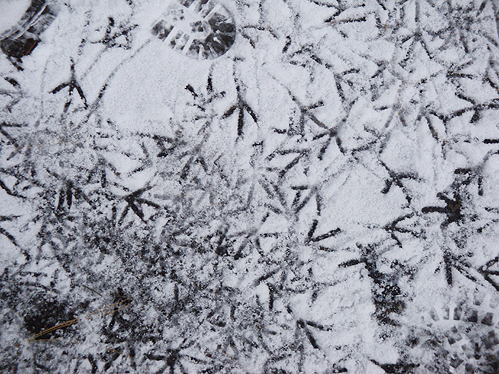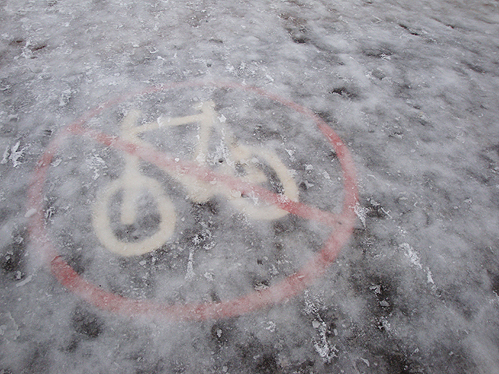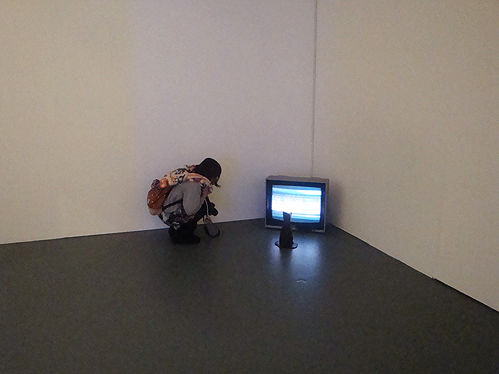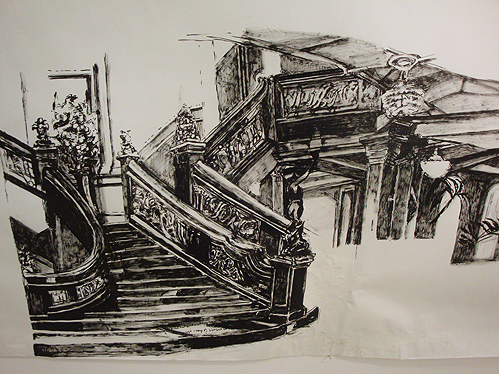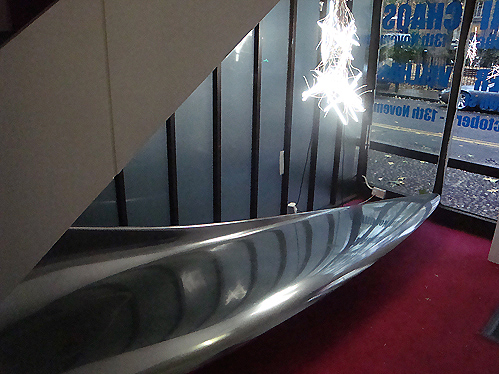Personal Bibliography
A complete alphabetical list of relevant books, articles, websites, film, video, exhibition, journals and lectures referenced in Phase 1 of the MA Interactive Media course.
A list of relevant books, articles, websites, film, video, exhibition, journals and lectures referenced in Phase I, Phase II and Phase III. More links on my delicious account.
Ali, Atteqa. Postmodernism: Recent Developments in Art in India. InHeilbrunn Timeline of Art History. New York: The Metropolitan Museum of Art, 2000–. http://www.metmuseum.org/toah/hd/pmin/hd_pmin.htm (October 2004)
Ananthakrishnan, G. (2010). Mumbai Diwali Decibel Levels: Cold Comfort. Nov.6th 2010. Digital Journo. [online]. Available from: http://digitaljourno.wordpress.com/2010/11/06/mumbai-diwali-decibel-levels-cold-comfort/ Accessed 14th May 2011.
Ashraf, K Kazi. (2005) Masala City: Urban Stories from South Asia. The New Mix: Culturally dynamic architecture, Sara Caples and Everardo Jefferson, Architectural Design. Vol 75, No 5 Sept/Oct 2005, pp.67-68.
Barry, A (2000). Noise. In: Pile, S. and Thrift, N. (eds.) City A-Z. London: Routledge.
Barjatya, S. (2003). Mein Prem Ki Diwani Hoon. [Film]. India: Rajshri.
Bendikson, Jonas. (2008). The Places We Live [online]. Available from: http://www.theplaceswelive.com/ [Accessed 1st Nov. 2010] Dominic M. McIver Lopes. (2001).
Bentham, J (1791). Panopticon Or the Inspection House Vol1 [ebook]. University of Lausanne. Available from: http://books.google.com/ebooks [Accessed 23rd April].
Benjamin, A. (2010). Trauma within the Walls: Notes towards a Philosophy of the City. Architectural Design. Vol. 80. No.5. pp.24-31.
Bickle, B. (2011). Seeing Ourselves. Zimbabwe Pavilion: Venice
Bombay Railway. Episode 1. Pressure. (2007). UK. BBC Four. 9th Sept. 2007. [Television]
Boyer, C (2001). The City of Collective Memory, Its Historical Imagery and Architectural Entertainments. MIT Press.
Blazwick, I. (2001). Century City: Art and Culture in the Modern Metropolis. London: Tate Gallery Publishing Ltd.
Burgin, V. (1996). Some Cities. London: Reaktion Books Ltd.
Bugada and Cargnel. (2011). Nico Vascellari. [online]. Available from: http://www.bugadacargnel.com/en/pages/artistes.php?name=21891. Accessed 21st June 2011.
Burke, A. (2010). The Urban Complex: Scalar probabilities and Urban Computation. Architectural Design. Vol. 80. No.5. pp.87-91.
Calvino, I (1997). Invisible Cities. New Edition. London: Minerva.
Cole, D. (2007). Patterns: New Surface Design. London: Lawrence King Publishing
Cotter, H. (2005). Objects of Repose and Remembrance. New York Times. [online]. Available from: http://www.nytimes.com/2005/03/30/arts/design/30cott.html?ex=1172638800&en=840b508f152bce9e&ei=5070 Date Accessed: 21st July 2011.
Danto, A. C. (1995). After the End of Art: Contemporary Art and the Pale of History. Princeton, New Jersey: Princeton University Press.
Dali, S. (2011). The Dali Universe. Venice: Fondazione Ambrosiana Per L’Arte E La Cultura
Degen, N. (2008). Dayanita Singh. Frieze Magazine. [online]. Available from: http://www.frieze.com/shows/review/dayanita_singh/. Accessed: 21st July 2011.
Design Observer Blogs. (2010) Uncanny: Surrealism and Graphic Design. Available from: http://observersroom.designobserver.com/rickpoynor/uncanny.html [Accessed 15th May 2011].
Dictionary of Media Studies (2006). p. 121. A&C Black Publishers: London
Emin, T (2008) Baby Things [online] Available from http://www.folkestonetriennial.org.uk/2011-event/artists/2008-tracey-emin/ [Accessed 23rd April 2011].
Eddistribution (2008) Robinson dans l'espace de Patrick Keiller [online]. Available from: http://www.youtube.com/watch?v=wBHgQBBgogc [Accessed 11th Jan 2011].
Foucault, M. (1984) Des Espace Autres. Architecture /Mouvement/ Continuité. [online] Oct. 1984. Translated from French by Jay Miskowiec. Based on a lecture by Michel Foucault on March 1967. Available from: http://foucault.info/documents/heteroTopia/foucault.heteroTopia.en.html. [Accessed 5th Jan 2010]
Foucault, M (1977). Discipline & Punish: The Birth of the Prison [online] Translated from French by Alan Sheridan. Available online from http://www.cartome.org/foucault.htm [Accessed 23rd April 2011].
Galerie Leonard & Bina Ellen Art Gallery (n.d.). Ways of Thinking: Works. [online] Available from: http://ellengallery.concordia.ca/en/reflexion_hadjithomasjoreige.php [Accessed 18th Dec. 2010]
Green, C. (2001). The Third Hand: Collaboration in Art from Conceptualism to Post-Modernism. University of Minnesota Press: USA.
Hales Gallery. (2010). Dawn Clements: Still Life. London: Hales Gallery
Hirschhorn, T. (2011). Crystal of Resistance. Biennale Di Venezia, Padiglione Svizzero.
Hong-Kai Wang. (2011). Music While We Work. Venice: Palazzo Delle Prigioni.
Johar, K. (1998). Kuch Kuch Hota Hai. [Film]. India: Dharma Productions.
Kaye, N. 2000. Site-Specific Art: Performance, Place and Documentation. Routledge: London
Kennedy, M (Jan 2011). Ai Weiwei’s Sunflower Seeds to go on sale at Sotheby’s [online] Available from http://www.guardian.co.uk/artanddesign/2011/jan/26/ai-weiwei-sunflower-seeds-sothebys?INTCMP=SRCH [Accessed 23rd April 2011].
Kitwise. (2010). Summertime 1-4 [online]. Available from: http://www.youtube.com/watch?v=hWlk1KIysqQ&feature=player_embedded#! [Accessed 11th Jan 2011].
Kit Wise. (2010). Xanadu [online] Available from: http://www.kitwise.com/ [Accessed 10th Jan 2011].
Lang, F. (1927). Metropolis. [Film]. Germany: Universum Film.
Lahoud, A. (2010). Post Traumatic Urbanism. Architectural Design. Vol. 80. No.5. pp.14-23.
luxmovingimage. (2009). Chris Welsby – Artist Interview. [online]. Available from http://www.youtube.com/watch?v=o3fdZewJc3Y&feature=player_embedded#at=20 [Date accessed 3rd April 2011]
Merleau-Ponty. 1962. Phenomenology of Perception. Routledge: London.
Muybridge, E. (2010). The Panorama of San Francisco from Street Hill 1878. Eadward Muybridge. London: Tate Britain
Malani, Nalini. Remembering Toba Tek Singh. (1998). Installation view Queensland Art Gallery, Brisbane, Australia. 2002 [Installation with video projection on walls, 12 monitors with video clips, tin trucks, quilts, and Mylar flooring]
Mazumdar, Ranjani. Bombay Cinema : An Archive of the City. Minneapolis, MN, USA: University of Minnesota Press, 2007. p 18, 19, 120. http://site.ebrary.com/lib/aib/Doc?id=10206194&ppg=18 Copyright © 2007. University of Minnesota Press. All rights reserved.
Mackey, S. (2010). Practice as Research: Performance, Place and Documentation. Arts University College at Bournemouth. 9th November.
Mermin, L. (2008). Shot in Bombay. [Film]. UK: Little Bird
Maeda, J. (2006). No Crackle Pop [online]. Available from: http://www.maedastudio.com/2006/burn/index.php?category=all&next=exists&prev=exists&this=burn [Accessed 21st October 2010].
Mertens, B. 2008. The artist Navin Rawanchaikul calls for Navins of the world to unite. The New York Times. [online]. Available from: http://www.nytimes.com/2008/01/29/arts/29iht-mertens.1.9573662.html?_r=1. Accessed 25th July 2011.
Moravian Gallery in Brno. (2010). Uncanny: Surrealism in Graphic Design by Rick Poynor.[online]. Available from http://www.moravska-galerie.cz/moravska-galerie/vystavy-a-program/aktualni-vystavy/2010/cosi-tisniveho-surrealismus-a-graficky-design.aspx Accessed [15th May 2011].
Menin, S. (2003). Constructing Place Mind and Matter. London: Routledge.
Naik, Y. and Khera, D. (2011). IIT-B Demands Noise Barriers. Mumbai Mirror. [online]. April 17th 2011. Available from: http://www.mumbaimirror.com/article/2/2011041720110417030951301232b713d/IITB-demands-noise-barriers.html [Accessed: 13th May 2011].
NationalGeographic. (2009). Amazing Northern Lights Time Lapse. [online]. Available from: http://www.youtube.com/watch?v=FcfWsj9OnsI [Accessed 29th Dec. 2010]
Noe, G. (2009). Enter the Void. [Film]. France: Fidélité Films.
Pallasmaa, J. (1996). Eyes of the Skin: Architecture and the Senses. John Wiley and Sons: USA
Parasol Unit. (2010). Adel Abdessemed: Silent Warriors. London: Parasol Unit
Patwardhan, Sudhir. Ulhasnagar. (2001). [online image]. Available from: http://www.sudhirpatwardhan.com/paintings.htm [Accessed 21st October 2010]
Patwardhan, S. (patwardhansudhirATyahoo.com). 18th October 2010. Re: Questions from an art student. Email to A.Kulkarni.(aditi.aduATgmail.com)
Per Bak. (1996). How Nature Works: The Science of Self-Organised Criticality. Copernicus Press: New York.
Protazanov, Y. (1924). Aelita: Queen of Mars. [Film]. Soviet Union: Mezhrabpom-Rus
Prigov, D. (2011). Dmitri Prigov: Dmitri Prigov: Hermitage Project 20/21. Venice: Ca' Foscari.
Poynor, R (2011). Surrealism in Graphic Design. Arts University College Bournemouth. 13th May.
Pile, S. and Thrift, N. (2000). City A-Z. London: Routledge
Rawanchaikul, N. 2011. Paradiso Di Navin: A Mission to Establish Navinland. Paradiso Gallery: Venice
Rebello, S and Lohade. U. (2011). Sound and fury in Mumbai. Hindustan Times Mumbai. [online] April 20, 2011. Available from: http://www.hindustantimes.com/StoryPage/Print/687364.aspx [Accessed 12th May 2011].
Russolo, L. (1967). The Art of Noise, futurist manifesto 1913. [pdf]. Something Else Press. Available from: http://www.ubu.com/historical/russolo/index.html [Accessed 13th May 2011].
Sowin, J. (2006). In Praise of Shadows: A Meditation. [online]. Available from:http://www.fireandknowledge.org/archives/2006/09/23/in-praise-of-shadows-a-meditation/ [Accessed 17th August 2011].
Scott, R. (1982). Blade Runner. [Film]. USA: The Ladd Company
Stoichita,V (1997). A Short History of the Shadow. London: Reaktion Books Ltd.
Tate Modern (2010). The Unilever Series: Ai Weiwei [online] Available from http://www.tate.org.uk/modern/exhibitions/unileverseries2010/default.shtm [Accessed 23rd April 2011].
Tanizaki, J. 1977. In Praise of Shadows. Leete’s Island Books: USA
Terror in Mumbai. (2009). UK. HBO. 30th June 2009. [Television]
Turner,C and Stoichita,V (2007). A Short History of the Shadow: Interview with Victor I. Stoichita. Cabinet Magazine Issue 24 [online] Available from http://www.cabinetmagazine.org/issues/24/stoichita.php [Accessed 26th April 2011].
Turrell, J. (2011). Ganzfield. Venice: Arsenale.
Thompson, I. (2003). What use is the genius loci? In: Menin, S.(eds). Constructing Place, Mind and Matter. London: Routledge. pp.66-76.
The Ontology of Interactive Art. Journal of Aesthetic Education [online] Vol. 35, No. 4 (Winter, 2001), pp. 65-81 Available from: http://www.jstor.org/stable/3333787 [21st October 2010]
Moraes, D. (1983). The Great Cities: Bombay. Second Edition. Amsterdam: Time-Life Books B.V.
TinType. (2010). Suki Chan: Utopia on the Horizon. London: TinType
UN-HABITAT. (2010), State of the World’s Cities 2010/2011: Bridging the Urban Divide. London: Earthscan. Available from: http://www.unhabitat.org/pmss/listItemDetails.aspx?publicationID=2917 [Accessed 28th Oct. 2010]
Van Hagen, J. (2010). Archichaos. London: ArtStanding
Victoria Miro. (2010). Yayoi Kusama: Flowers that Bloom Tomorrow. London: Victoria Miro
Warner, M (2007). Darkness Visible Cabinet Magazine Issue 24. [online] Available from http://www.cabinetmagazine.org/issues/24/Warner.php [Accessed 26th April 2011]
White Cube. (2010). Mark Bradford: The Pistol that Whistles. London: White Cube
Walsh Gallery. (2007). Nalani Malani: Mother India: Transactions in the Construction of Pain [online]. Available from http://www.walshgallery.com/nalini-malani-mother-india-transactions-in-the-construction-of-pain/ [Accessed 25th October].
Welsby, C. (1972) British Artist’s Films, Chris Welsby. [DVD]. BFI.
West, G. (2011). The Surprising Math of Cities and Corporations. [online]. Available from http://www.ted.com/talks/geoffrey_west_the_surprising_math_of_cities_and_corporations.html [Accessed 2nd Aug. 2011].
Wikipedia (2011). The Art of Noises. Available from: http://en.wikipedia.org/wiki/The_Art_of_Noises [Accessed 13th May 2011].
Wikipedia. (2011). Urbanism [online] Available from http://en.wikipedia.org/wiki/Urbanism. [Accessed 23rd April 2011].
Yerly, S. (2009). Pier Stockholm. 23rd October 2009. We Find Wildness [online]. Available from: http://www.we-find-wildness.com/2009/10/pier-stockholm/ [Accessed 13th November 2o10]
Statement
Mumbai+Bombay is an immersive multimedia experience that explores the conflicted and fragmented city of Mumbai with the use of shadows and light. A surreal landscape of an imagined Mumbai parts to reveal a hidden city of violence and disparity; a dystopian elsewhere that is inspired by the recent history of terrorist attacks and growing inequality within the metropolis.
Reflection
The first turning point was a discussion with Phil Beards about focussing my topic of interest for the MA. Based on Phil's suggestion, I ended up brainstorming and created a mind map which outlined the proposed area of study.Initially I was uncertain about which bipolarity I should study and looked at several opposing factors within Mumbai such as ugly and beautiful and poverty versus luxury. During the course of my research on Mumbai's architecture, I stumbled on an article by Ashraf K. Kazi (2005) where he mentions the concept of elsewhere and it's relation to the evolving architecture of Mumbai city. This conflict between the elsewhere and the here was the perfect example of bipolarity; juxtaposing the luxurious pseudo-greek high rises of Hiranandani with the crowded squalor of the Tunga slums.
A brainstorming discussion with Liam Birtles helped expand my thoughts on the final installation work. We discussed several ideas and technical possibilities, hidden cities, the use of shadow, and how time could also be a factor within the installation. Eventually the most important event was the installation test in December which helped me see my work in it's intended medium for the first time. Several issues needed much more thought such as the use of space, time and sound and how these could in turn interact with the audience while flowing with the theory and concept. This first experimental installation and the consequent discussions and findings helped clarify my concept and goals for phase 1.
A string of events in the last two and a half weeks of phase 1 helped synthesize my aims and theoretical framework. A peer critique encouraged me to continue using real shadows and a group critique steered me towards the works of Kit Wise and theories of heterotopia. While creating the presentation for the group critique I also analyzed and listed the technical limitations of my current installation experiments. And a final tutorial with Phil helped me start planning for Phase 2 and the use of interactive sound.
Phase 1 was an experimental phase, just like the final work from Phase 1 is an experiment and not a formal installation to be placed in an art gallery. Several factors will be taken into account for Phase 2, based on the findings of the installation experiment conducted on 20th of January. These will probably include research into the history of shadows, use of sound, technical details, coding, the 360 panorama and how these additional layers could affect the audience experience. Most importantly phase 2 will not be an experimental phase, but a project phase which will focus on the dissemination and application of my practice.
Reference
Ashraf, K Kazi. (2005) Masala City: Urban Stories from South Asia. The New Mix: Culturally dynamic architecture, Sara Caples and Everardo Jefferson, Architectural Design. Vol 75, No 5 Sept/Oct 2005, pp.67-68.
Research Methods: Phase 1
A detailed look at the theoretical framework and research methods behind my practice in Phase 1. Key issues discussed are practice as research, the post-digital age, heterotopia, qualitative research methods, and limitations of these methods.
We've had several inputs on practice as research, however Dr. Sally Mackey's lecture helped clarify my ideas on the topic. Besides talking at length about the praxis between theory, reflection, action and practice she also mentioned creating a laboratory; an ideal set-up that would help answer and clarify the key questions of the research. The lab I have created is an installation space that allows the audience to interact with the work and each other. By continually experimenting in this interactive space I am able to clarify my key questions and focus my research topic further.
Currently I am attempting to transform a range of questions into one key point. Below is a list of possible topics of enquiry: How does the user's interaction with the space help add meaning to the work Mumbai+Bombay? How can an interactive space illustrate the conflict between the ideal elsewhere and the here in Mumbai? How does audience behavior and expectation affect the perceived meaning of the work Mumbai+Bombay? What is the perceived difference between an "insider" and "outsider" in viewing the work Mumbai+Bombay?
Dissemination and Application: Another important factor to consider is the dissemination of the final work. The web is the most easily accessible form the final work can take. Additionally, the work can be set up in a gallery or informal space as a more immersive experience of changeable dimensions.
Theoretical Framework:
Post Digital Age: As mentioned in my preliminary Study Plan the concept of a post-digital age introduced by John Maeda made a significant impact on my philosophy as a designer of interactive media. The terms clarifies the 'distinction between those that are passed their fascination with computers, and are now driven by the ideas instead of the technology (John Maeda, 2006).’
Heterotopia's and 'Other' Spaces:
Michel Foucault (1967) describes heterotopias as "places that do exist and that are formed in the very founding of society - which are something like counter-sites, a kind of effectively enacted utopia in which the real sites, all the other real sites that can be found within the culture, are simultaneously represented, contested, and inverted. Places of this kind are outside of all places, even though it may be possible to indicate their location in reality." Thus all cultures and civilizations contain such places. Foucault goes on to describe several different kinds of heterotopias, of which the following were most relevant to my practice.
Heterotopia of compensation: Especially relevant to colonies, these places are contrary by way of compensation and function between two extreme poles (Foucault, 1967):
"...their role is to create a space that is other, another real space, as perfect, as meticulous, as well arranged as ours is messy, ill constructed, and jumbled. This latter type would be the heterotopia, not of illusion, but of compensation, and I wonder if certain colonies have not functioned somewhat in this manner. In certain cases, they have played, on the level of the general organization of terrestrial space, the role of heterotopias."
Another example of a heterotopia is the "persian garden," where several plants and flowers from around the world co-exist in a small place which is like a microcosm of the larger world; "the garden is the smallest parcel of the world and then it is the totality of the world. The garden has been a sort of happy, universalizing heterotopia since the beginnings of antiquity..." Similarly by constructing a limited cityscape which includes as many landmarks and symbols as possible, I will attempt to explore this "other" space within Mumbai.
Research Methods
Qualitative Research: Systematic study of Mumbai and the ways the city is represented in popular media and art. Typical of qualitative research, this included looking at chosen media and art works in a case-based method. Each film, artwork, architectural style or documentary chosen for study was reviewed in detail. Thus the method encouraged looking into each case study in-depth rather than covering a broad overview of every possible representation of the city.
Interviews: Sudhir Patwardhan is an important artist within the Indian contemporary art movement, and his practice centers on Mumbai and it's people. Deeply influenced by his work Silent Town (2007) I contacted him by email in the beginning of Phase 1 for pointers on which artists and books I should study, since I found the lack of information of Indian contemporary art challenging. Here is an excerpt from his email which answers some of my questions:
Reflexive Journal: Commonly used as part of qualitative research, a regularly updated reflexive journal of my thoughts, comments and ideas helped document my progress. The journal or blog is a complimentary annotation to the work.
Analysis of documents and materials: A continuous process of reviewing the cases studies, and their importance in answering the research questions. An important factor was reviewing the source itself, it's reliability and validity.
Analysis
In trying to maintain a "polyphonic conversation" between my practice and my research I have fallen into a method which is similar to a communication design process. The cyclical process-driven method of research Sally Mackey calls "praxis" is another way to describe the "design process" - a rigorous method of study and design followed by reflection, study and more design. One main difference is the stage of user-testing that most often precedes another round of reflection.
Phase 1 consisted of a similar cyclical research method. Creating a lab, or in this case an installation space where I can test the limits of my key questions, and then going back to the drawing board based on the results. This cycle of experiment, reflection and experiment helped clarify my theoretical framework as well as my practice. An important aspect of my reflection was discourse, relevant conversations with peers, faculty and artists.
Data collection and analysis of what was relevant to the project was challenging due to the significant amount of information available. Process involved choosing case-studies based on relevance to the project, and discarding information that did not fit within the required parameters such as visual style, architecture, historical significance, concept and theoretical framework. At the same time the lack of information within certain areas proved difficult. The information on the development of contemporary art in India was limited and in some cases contradictory. The history of Mumbai itself is long and complicated, a series of conflicts with contrary histories. Some of these issues resolved themselves in time through action. Others clarified when I drew on six years of personal experience, living as a Mumbaikar.
Another hurdle is my limited access to Mumbai itself. To overcome this, I will be travelling to Mumbai for ten days to collect information, visit artists, shoot films and record street sounds based on my findings in Phase 1.
Despite the above mentioned limitations, maintaining regular blog entries of my progress allowed me to pinpoint and correct events that were most influential or most detrimental to the development of my practice, and critically review the leaps I made from research to practice or vice versa.
Reference:
John Maeda. (2006). No Crackle Pop [online]. Available from: http://www.maedastudio.com/2006/burn/index.php?category=all&next=exists&prev=exists&this=burn [Accessed 21st October 2010]
Foucault, M. (1984) Des Espace Autres. Architecture /Mouvement/ Continuité. [online] Oct. 1984. Translated from French by Jay Miskowiec. Based on a lecture by Michel Foucault on March 1967. Available from: http://foucault.info/documents/heteroTopia/foucault.heteroTopia.en.html. [Accessed 5th Jan 2010]
Mackey, S (2010). Practice as Research: Performance, Place and Documentation. Arts University College at Bournemouth. 9th November.
Patwardhan, S. (patwardhansudhirATyahoo.com). 18th October 2010. Re: Questions from an art student. Email to A.Kulkarni.(aditi.aduATgmail.com)
Documentary: Bombay Railway
Bombay Railway is a two-part documentary by BBC 4 that paints a picture of an overcrowded train system pushed to its limit by 6 million commuters a day, full of people who strive towards their goals tirelessly, in the city of dreams that is Mumbai. I was a frequent traveller myself, so it was interesting to watch the documentary which is from the point of view of an observer rather than someone who has lived the experience. What we call "Crush" is the super rush hour that's also mentioned in the film, and the statistics and video footage is more frightening than actually travelling in the crowd. As an observer, the sight of 5000 or more people getting into trains meant for 1200 people within 30 seconds is a spectacle. As a participant it's an exciting, thrilling, and somewhat harrowing daily reality. The fact is that the local trains are cheap, charging about 1 penny a mile and the trains are always on time with a 97% efficiency, so despite the odds the system is dependable and vital to the normal functioning of Mumbai.
In the first part of the film, the stories about runaway kids living on Mumbai platforms sounds sunny and positive, giving the audience hope that things could turn out well for these children that have escaped abusive families. However describing a railway station as a "family" where you get to "be yourself" is overly optimistic and misleading. Most of these runaways end up being abused, drugged and treated badly. I have seen them being thrashed by cops or others on more than one occasion. Life for kids in such places is rarely a happy place.
Various other issues such as illegal hawking, crossing tracks, and the terrorist bombings are also mentioned. Below are a few screenshots from the film:
Documentary: Shot in Bombay
[vimeo http://www.vimeo.com/6735583] The documentary uses a lot of "typical" shots of Mumbai, shots of the streets, children, and film sets, with catchy Bollywood music in the background. The opening sequence above is especially successful in creating a rich, romantic atmosphere. Here are some screenshots from the sequence which best represent this slice of the city:
Related Posts that study the city's representations in the media: Bombay Cinema, An Archive of the City | Elsewhere Places | Bombay Book Cover | 26/11 Attack | Dharavi Documentary | Places we Live
Group Critique
Overall Feedback:Brian Catling (performance artist and poet) mentioned that I could add a layer of virtual shadows to the video installation, in addition to the real shadows thrown by the audience. He also mentioned that since the user's action is central to viewing the work, it's almost as if the user is causing the resulting violence/action, in this case the image of a burning building that becomes visible only in the user's shadow. In answer to my question about the kind of space I should use for the installation, he said that using a clean, "constructed" white room would work best with the concept. There was a brief discussion on the lack of sound used, and he thought that sound was not required at all.
Several artists and films that could help develop my practice were mentioned: such at Kit Wise, Rope by Hitchcock and "London" and "Robinson in Space" by Patrick Keiller. I was also directed to Foucault's theories of Heterotopia, Dystopia and Utopia; "Non Places - Introduction and an Anthropology of Super Modernity" by Mare Ange and the History of the Shadow by V. Strichita.
Reflection: The use or lack of sound is an important issue which I still have to properly integrate into the concept of the bipolar, constructed realities. However I agree with Brian in that the sound itself is not very important to the installation. It is a concern to me that the sound or music could dominate the visuals. The result should be dream-like, since dreams have a tendency to have faded or muted sounds when remembered. Examples of appropriate sounds are: muted voices, very low volume music, or something subtle such as crackling of fire and gunshots in the distance. During the presentation I also realized that a subtle difference between the "here" and the "elsewhere" is better than an overly dramatic and "literal" difference. The space itself is still an issue which I need to work on to some extent. A large part of phase 2 will be building on the space, experimenting with the use of objects along with projectors, and trying the 360 degree panorama. Overall, creating the presentation helped me organize my thoughts in terms of the kind of framework and process I followed, looking at the gaps in my reasoning and further steps I needed to take in my research.
Notes: Topics to read further: Para-Feminism, Invisible artwork, Family photographs as imposed memories, Leonard Talmy: Force Dynamic in language: "door is closed" vs the "door cannot be opened." Uses of Enchantment by Bruno: interesting book about fairy tales, Costume vs. Fashion is the folk (narrative, story) vs. elite (market, consumer); Physiology of taste by Brillat Savarin; Dutch golden age (objects with meaning, symbols) - using a room or a window to project against or using meaningful objects in the installation; Shadows: Using shadows in different tones, different light sources. Also interesting is the book Praise the Shadow; Constructed Reality: creating from photographs, memory, or not even that, but just found photographs is one step down. Films: Many Moons (2008) b Janelle Monae; Coraline (animation); Eraserhead by David Lynch
Bombay Cinema: An Archive of the City
Initially the concept of the "elsewhere" that inspired my focus on the conflict between the real and the ideal in Mumbai came from an article by Ashraf K. Kazi about the "Masala City." He went on to give examples from Bollywood movies such as Mein Prem Ki Diwani Hoon, where the entire movie unfolds in an imaginary Indian town called Sundarnagar. This lead me to look into Bollywood and the ways it represents Mumbai. The movie-making industry in Mumbai has come of age - now more than a 100 years old, and it reflects the city's conflicts, politics and desires as much as its people. Excerpts from the book Bombay Cinema by Ranjani Mazumdar:
"The Bombay-based film industry resonates throughout the world, in places where the Indian diaspora has settled and in places where nonnative speakers appreciate its unique choreography of music, melodrama, fantasy, and spectacle. Much of popular cinema’s success can be attributed to what many in the industry refer to as a “techno folk” form, which combines folk traditions with new cinematic technology."
"Drawing on various visual, literary, and artistic traditions, each with its own distinct history, popular Indian cinema is an evolving, unabashedly hybrid cultural form that narrates the complicated intersection between tradition and modernity in contemporary India. Film production started in India almost simultaneously with other filmmaking countries, beginning in 1896."
The author also mentions the Indian street, as a place which contains Indian life and all its related conflicts. Although I am currently focussing on building a virtual Mumbai skyline, creating a street could also interest me in the future.
"In a rare piece, Arjun Appadurai describes the Indian street as the space where “India eats, works, sleeps, moves, celebrates and worships. The street is a stage that rarely sleeps” (1987, 14). Through a vivid visual anthropology (across different cities of India), Appadurai traces both the historical formation and the function of the street, as well as its present location in the cultural and social life of India. The multiple activities and events of the street are a clear reminder that the “sharp demarcation of public from private spheres is a recent addition to the Indian consciousness” (1987, 14). For Dipesh Chakrabarty, the modernist categories of the public-private divide were challenged by the street in India where “People washed, changed, slept...out in the open” (16). But neither Appadurai nor Chakrabarty refers specifically to the presence of women in the street. The Indian street as described by these writers is ubiquitous and peopled by all types engaged in different forms of activity in an almost genderless space."
Reference:
Ashraf, K Kazi. (2005) Masala City: Urban Stories from South Asia. The New Mix: Culturally dynamic architecture, Sara Caples and Everardo Jefferson, Architectural Design. Vol 75, No 5 Sept/Oct 2005, pp.67-68.
Mazumdar, Ranjani. Bombay Cinema : An Archive of the City. Minneapolis, MN, USA: University of Minnesota Press, 2007. p 18, 19, 120. http://site.ebrary.com/lib/aib/Doc?id=10206194&ppg=18 Copyright © 2007. University of Minnesota Press. All rights reserved.
Elsewhere Places
Screenshots from the movie Mein Prem Ki Diwani Hoon, which takes place in a fantasy location called SundarNagar, which literally means beautiful-place. Bollywood directors frequently use scenes from Switzerland, Scotland and Mauritius to represent an elsewhere or ideal India.

Film Locations for Main Prem Ki Film Locations for Kuch Kuch Hota Hai Mohobbatein Locations DDLJ Locations No Entry Locations
Circle of Confusion
One line from this article grabbed me: "It is impossible to grasp the city, one can only take a fragment of it."
 [Image Source] | Circle of Confusion by Joana Hadjithomas and Khalil Joreige | Photographic installation | Mirror, colour digital prints (3,000 pieces), ink inscriptions.
[Image Source] | Circle of Confusion by Joana Hadjithomas and Khalil Joreige | Photographic installation | Mirror, colour digital prints (3,000 pieces), ink inscriptions.
The work resonates with the aim of my project, as it seeks to represent the city of Beirut: how it's various and poorly documented conflicts have cut it into pieces, making it impossible to make a "true" picture of it, inviting the user to destroy the city by taking pieces off the board and scattering them, revealing a layer beneath. One of the questions brought up in the article is: "How does the viewer’s participation in this work, by removing and taking possession of a fragment of the city of Beirut, add to the meaning of Circle of Confusion?"
Similarly I can attempt to create a question for my work: How does the viewer's participation in this work, by revealing the hidden city of Mumbai in the viewer's shadows, add to the meaning of Mumbai+Bombay?
Peer Critique
We organized a peer critique for the 14th of December to discuss our work. At this point most people are midway through their projects. About 12-15 part-time and full-time MA students attended the workshop. I presented a video and photographs from a recent installation test. Here are some points of reaction to my work: > Simple, yet effective
> Interactive without the use of very complex technology. Since the user is essential to viewing the artwork.
> Use of technology is secondary to the concept.
> Prefer to see it projected on walls, instead of floor since it's more natural.
> Want to see more animation: people, events, day changing to night.
> Want to see a more dramatic difference between the two skylines.
> One person interpreted the "real" city as a doomsday city since it contains images of poverty and burning buildings.
> Important to note how most people who view the work generalize it to any city rather that Mumbai, unless specifically told.
> Prefer the rough sketchy version of the city.
> Almost a film.
Overall, I realized how different each person's work and philosophy was, from Fine Art to Animation finding common ground is not easy since its like each person is from different planets. At the same time it was useful to see how a fine artist or animator would react to my work. Additionally, various topics such as self-reflexive films, and the "axiomatic" were discussed. I also discovered a piece of work which later became vital to my understanding of my practice. It is called Circle of Confusion by Joana Hadjithomas and Khalil Joreige, 1997. See my notes on this work here.
Bombay Book Cover
I attended a group tutorial that was held for all the Graphic Design MA students on the 13th of Dec. I felt it was important to gain some perspective on my project, since graphic students would have a different point of view when it came to Interactive Media. Peer feedback is always helpful, and I was simply curious about the kind of projects the other MA students were working on. The one-day workshop was moderated by Phil Jones, and involved all of us creating a quick piece of graphic work based on an open-ended brief. We were instructed to find an object or a photograph that had anything to do with our chosen topic, in my case, Mumbai. Since we had just 30 minutes, I ended up with a Time and Life book on Bombay, and chose the cover as my topic of study.
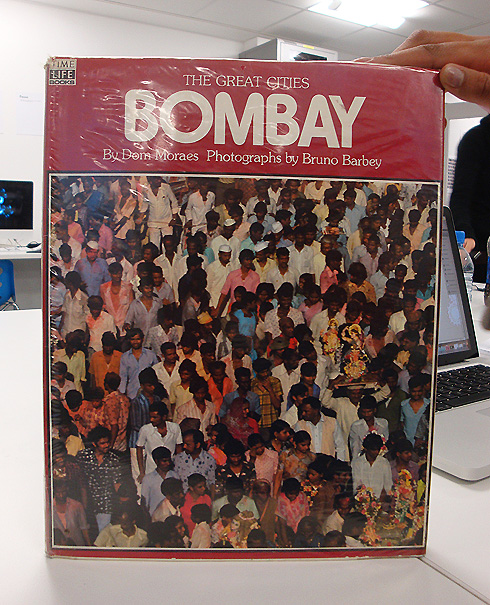
What followed was a group analysis, dissecting the object in terms of semiotics, its source, context, its materials and other relevant factors that give it meaning. After the analysis each person was given a new brief: to convert or transform the object into a graphic work keeping in mind theanalysis and discussion. Each person was given two hours to create a finished piece of graphic work.
During the discussion several people mentioned "dots" as a recurring shape in the cover, as each person was reduced to a dot. Another point was how the photograph transformed many individuals into one large mass of colour. My aim was to reduce the cover to its basic colours and shapes. In one way the poster is a mockery of the original object, as it strips it of meaning. At the same time is still comparable to the original when placed next to the other because of similar shapes, alignment and colours.
Abigail Reynolds
Abigail Reynolds: Layering and tessellation.

"The Universal Now: Relief sculptures using found photographs of the same place taken at different times." | Seventeen Gallery.
Reflection: Contemplating possibilities of adding layers to the already existing two layers of light as projections. It is possible that a third city panorama could exist behind the two already conceived, though it would be a print or a painting. It could also be a texture to add another layer of interactivity, that of touch.
26/11 Attack: Video footage
Documentary footage from the 26/11 attack on mumbai where 9 gunmen left more than 170 people dead over 3 days, and targetted the Taj Mahal hotel, Oberoi, Cafe Leopold (which I still frequent), CST and Cama Hospital. Created by Dan Reed, Terror in Mumbai uses CCTV footage and recorded conversations between the gunmen and their handlers in Pakistan to create a realistic picture of what happened that day.

(Image: BBC Source)
[vimeo http://www.vimeo.com/15290936]
[Video Source: Channel 4, HBO: Dan Reed]
This is an important aspect in creating the cityscape that shall represent the "here" rather than the elsewhere, the reality of what Mumbaikars have to face everyday.
Documentary: Changing face of Dharavi
Changing face of Dharavi, a documentary by journalism student Anisha Sharma. [youtube=http://www.youtube.com/watch?v=Tv8KC1bES50]
Gallery Hopping
 Heavenly Creatures, Group exhibition curated by Artnesia, The Aubin Gallery, 4th Nov. to 24th Dec. 2010.
Heavenly Creatures, Group exhibition curated by Artnesia, The Aubin Gallery, 4th Nov. to 24th Dec. 2010.
Hot Chocolate, 2009 by Appau Junior Boakye-Yiadom (Ghana, 1983). Porcelain cat, fireplace DVD, TV monitor, dark chocolate; Variable Size. Heavenly Creatures exhibition at the Aubin Gallery.
Flowers that bloom tomorrow by Yayoi Kusama, presented by Victoria Miro. 7th Oct to 13th Nov. 2010.
Story of Rice Installation of neon lights in a circular formation (8 words), 2006 Edition of 3. Partially visible is Story of Rice Installation of neon lights (33 characters) on angled wooden sheld, 2006. Edition of 3. Utopia on the Horizon by Suki Chan, TinType Gallery, 11th Nov. to 18th Dec. 2010.
Art by unknown person near the entrance of Hales Gallery, London.
First Class (A Night to Remember, 1958). Still Life by Dawn Clements, Hales Gallery, 22nd Oct to 20th Nov. 10 meter drawing weaves multiple edited scenes from the film a Night to Remember (1958).
Installation by unknown artist at the entrance of Archichaos exhibition, Artstanding.
Unstructured Body by Tiphaine De Bodman, 2010. Archichaos, Curated by Julia Van Hagen/Artstanding.
Archichaos Exhibition, ArtStanding, 14th Oct to 13th Nov. 2010.
The Other Side 24th Sept. 2010. No. 18, The Independent, by Damian Ortega. A selection of outcomes in reaction to the news from 19.08 to 27.09/10.
Detail.
Detail, the Independent by Damian Ortega







